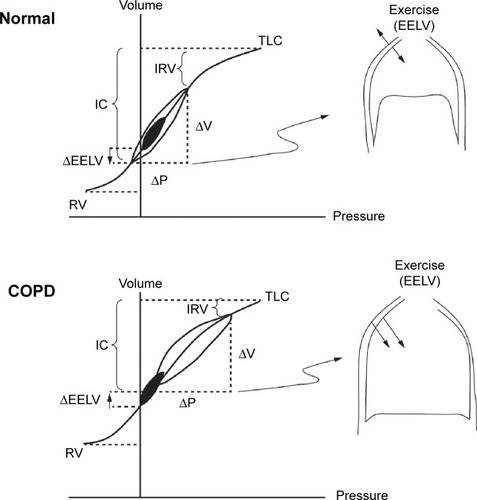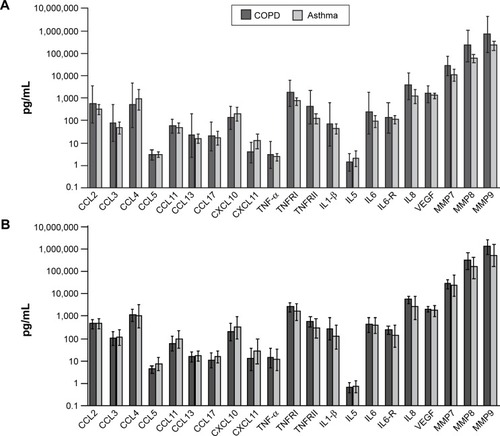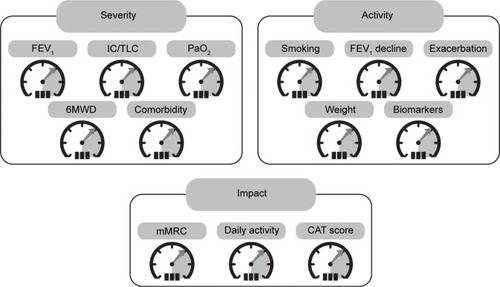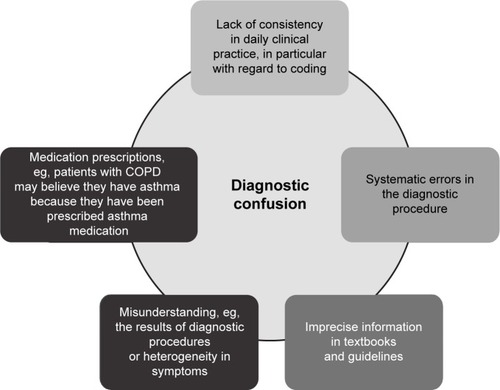Figures & data
Table 1 COPD categories based on a combined score for symptoms, degree of airflow limitation, exacerbation risk, and presence of comorbidities
Figure 1 Comparison of pulmonary dynamics in health and COPD showing tidal pressure-volume curves during rest (filled area) and exercise (open area).
Abbreviations: EELV, end-expiratory lung volume; IC, inspiratory capacity; IRV, inspiratory reserve volume; P, pressure; RV, residual volume; TLC, total lung capacity; V, volume.

Figure 2 Sputum inflammatory mediators in patients with asthma and COPD having phenotypes for (A) eosinophilic airway inflammation and (B) non-eosinophilic airway inflammation. Horizontal and error bars set at geometric mean and 95% confidence interval.
Abbreviations: CCL, CC chemokine ligand; CXCL, CXC chemokine ligand; IL, interleukin; MMP, matrix metallopeptidase; TNF, tumor necrosis factor; TNFR, tumor necrosis factor receptor; VEGF, vascular endothelial growth factor.

Table 2 Clinical and pathological similarities between asthma and COPD
Figure 4 Proposal for a COPD assessment control panel of variables that relate to three domains of the disease – severity, activity, and impact.
Abbreviations: 6MWD, 6-minute walk distance; CAT, COPD Assessment Test; IC/TLC, inspiratory to total lung capacity ratio; mMRC, modified Medical Research Council Dyspnea Scale; PaO2, arterial oxygen pressure.


